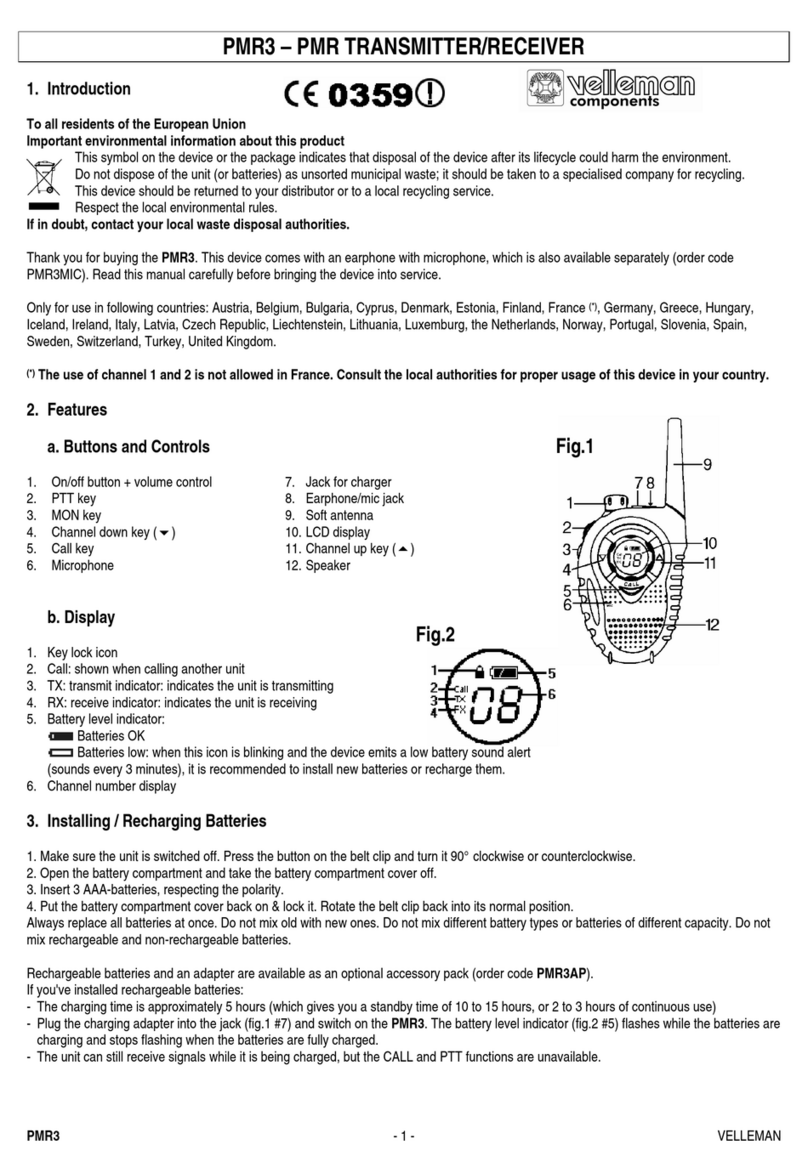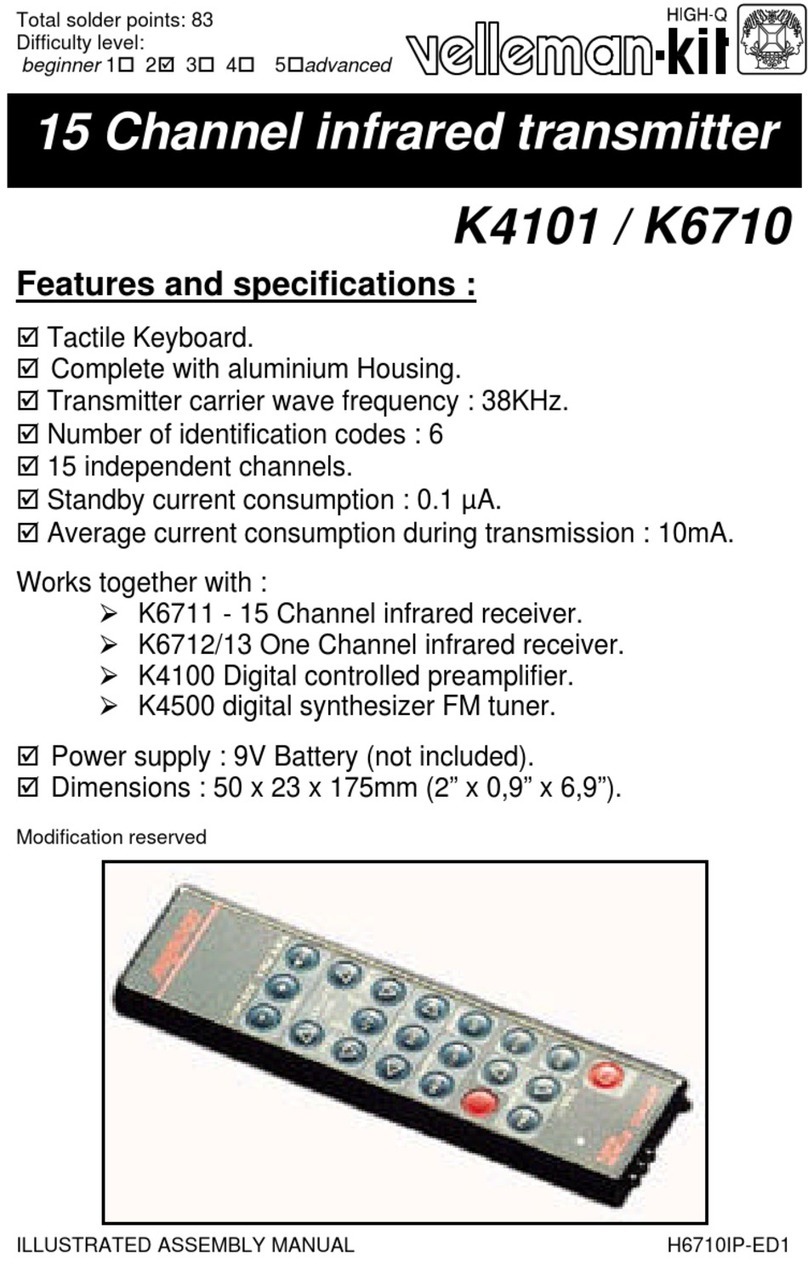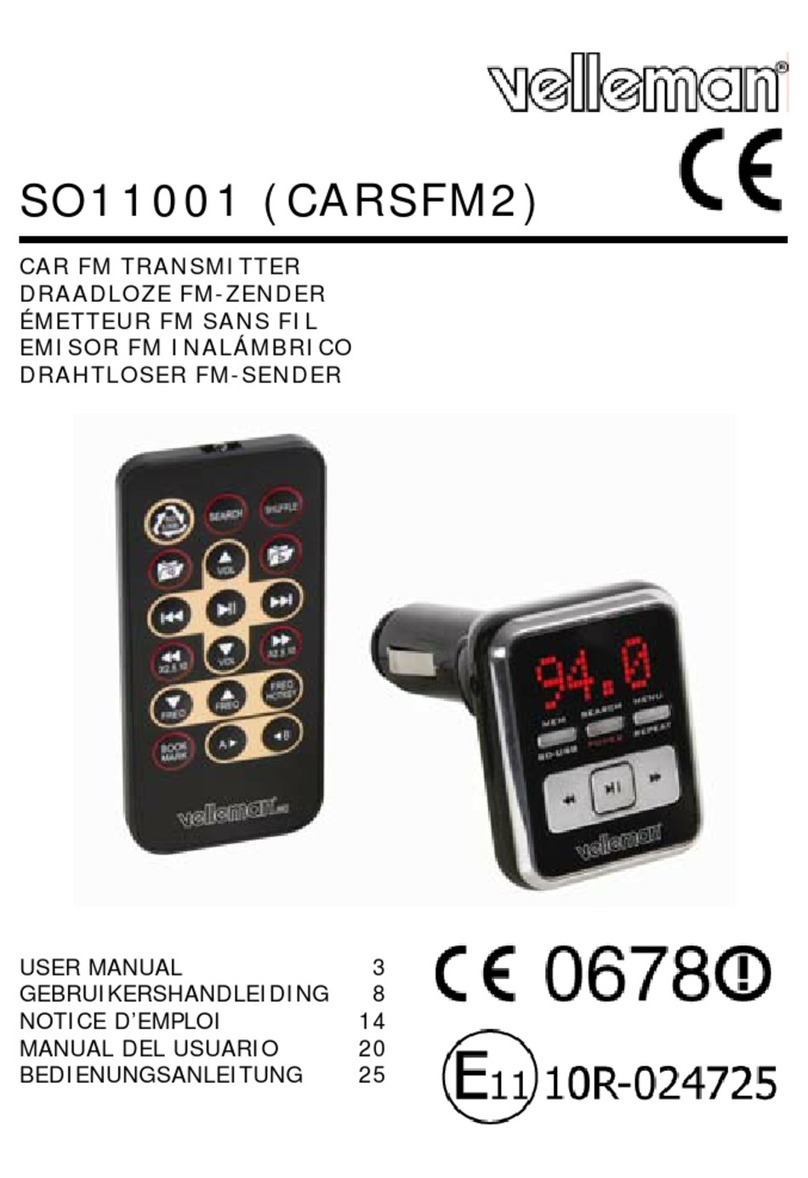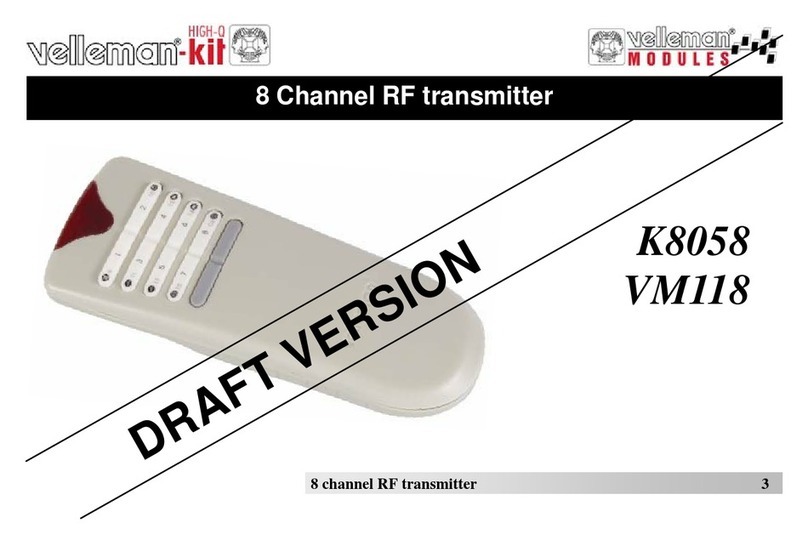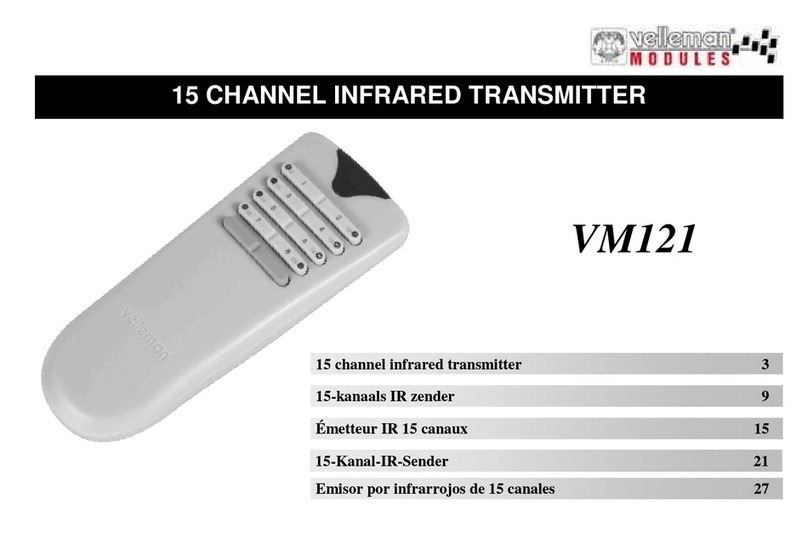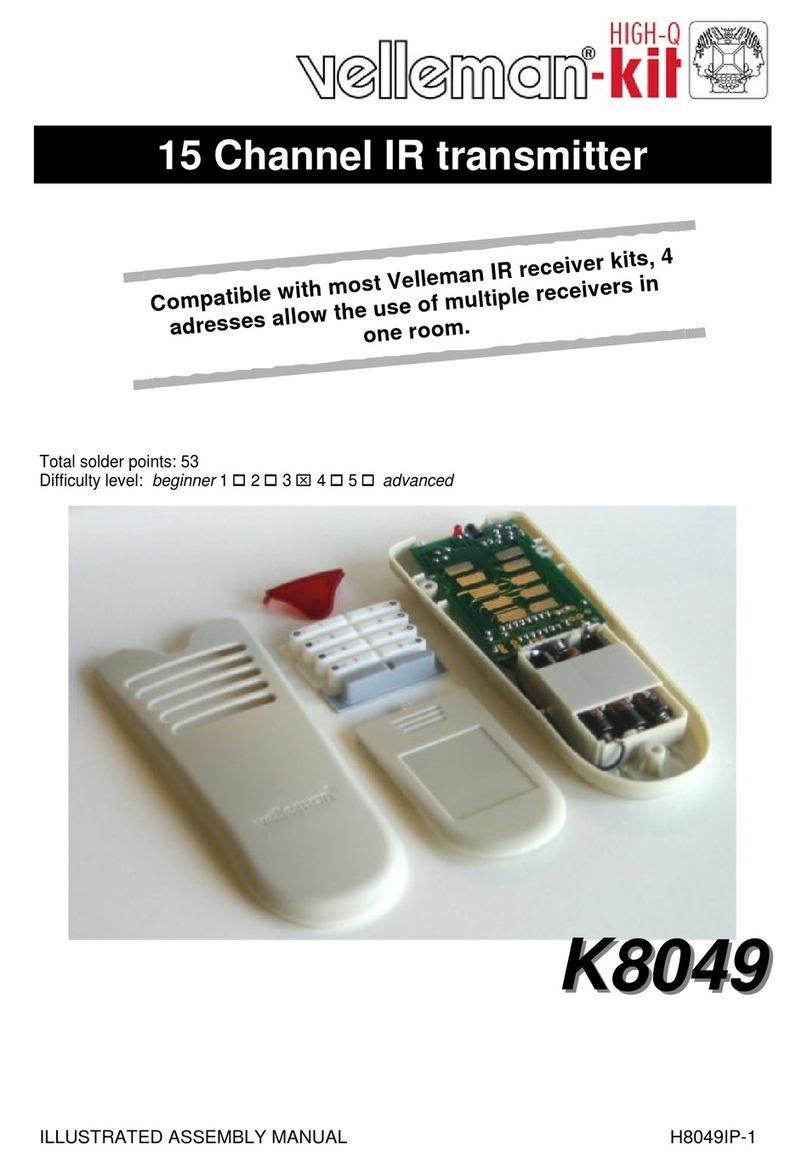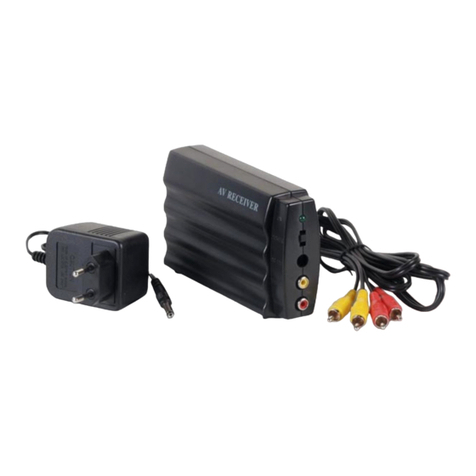
AVMOD17 5 NL
2. Connect the yellow (video) plug of the mini RCA cable with the video input jack of the computer.
3. Connect a mini stereo "Y" adapter (available in any electronics shop) with the LINE OUT jack of the computer and
connect the red and white A/V jacks with the red and white A/V plugs of the mini RCA cable coming from the
receiver.
Troubleshooting
No signal is being received
•Check if the transmitter and the receiver are properly connected with the A/V components you want to use for the
transmission or reception of the A/V signals.
•Transmitter and receiver should be ON.
•The TV and the video source (VCR, DVD player, satellite receiver, etc.) should be ON.
•All plugs should be pushed all the way in.
•Check all cable connections.
•Make sure the CHANNEL switches of the transmitter and the receiver are set to the same channel.
•If you use an RF modulator to connect the receiver to your TV then you should check if the TV is set to the same
channel as the TV CHANNEL switch of the RF modulator (3 or 4).
There is a weak signal or there's interference
•Rotate the transmitter to improve reception.
•Set transmitter and receiver to a different channel e.g. select channel 3 for both instead of channel 1).
•A microwave can cause interference if it is being used in close proximity to the transmitter or the receiver or if it
interrupts the direct line of sight between the transmitter and the receiver. Remove the microwave or turn it off.
•The distance between the transmitter and the receiver should not exceed the transmission range.
If the A/V source cannot be operated with your remote control
•Extend the IR antenna and adjust the orientation of the antenna.
•Replace the batteries of the remote control.
•Use the remote of the A/V source device and not that of another device.
Care and Maintenance
•Keep this device out of reach of small children.
•Do not try to open the housing to avoid damaging the device.
•Keep the device dry. Rain, moisture and fluids contain minerals that corrode electronic circuits.
•Do not store the device in a dusty or dirty environment to avoid damage to the moving parts.
•Do not store the device in a warm environment. High temperatures shorten the lifespan of electronic devices and
can warp plastic parts.
•Do not store the device in a very cold environment. When the device is then moved to a warmer environment this
may lead to condensation inside the housing. This condensation may damage the electronic circuits.
•Do not drop or shake the device and do not subject it to severe shocks. A rough treatment may cause damage to
the internal circuits.
•Do not use solvents or abrasives to clean the housing.
•Only use the included power supply or a supply with identical technical specifications.
•Avoid overcharging outlets or cables as this may lead to fire or electroshocks.
